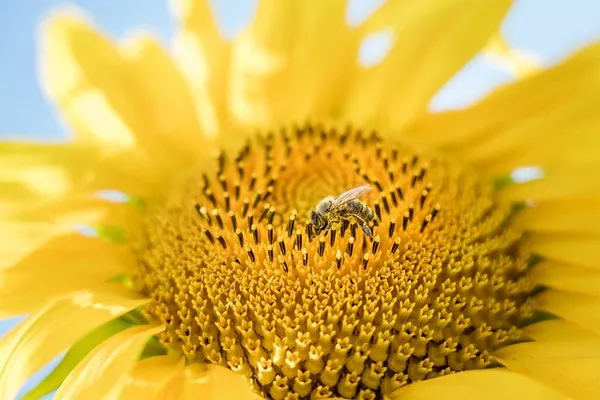Sunflowers are beloved for their cheerful appearance and vibrant colors. These iconic blooms not only enhance the aesthetic appeal of gardens but also bring joy to the hearts of those who admire them. While sunflowers are traditionally grown in large fields or gardens, they can also thrive in pots and containers, making them a versatile choice for any space, whether you have a sprawling garden or a small balcony. In this article, we will explore the art of planting sunflower seeds in pots, providing you with a comprehensive guide to ensure your potted sunflowers reach their full potential.
Selecting the Right Sunflower Variety
The first step in growing sunflowers in pots is choosing the right variety. Sunflowers come in various sizes and colors, so consider the space you have and the aesthetic you wish to achieve. Some popular sunflower varieties for pots include:
Dwarf Sunflowers: These compact sunflowers grow to a manageable height, usually 1 to 3 feet, making them perfect for pots and containers. Popular options include the ‘Sundance Kid’ and ‘Music Box.’
Teddy Bear Sunflowers: These sunflowers have double blooms, adding an extra layer of charm to your container garden.
ProCut Sunflowers: These sunflowers are well-suited for cutting and have a long vase life, making them a great choice for those who want to enjoy sunflowers indoors as well.
Sunflower Mixes: If you’re looking for a diverse display, consider planting a mix of sunflowers, each with its own unique color and size.
Choosing the Right Container
Once you’ve selected the sunflower variety, it’s essential to choose the right container. The container you select will have a significant impact on the growth and health of your sunflowers. Here are some key considerations:
Size: Opt for a pot or container that is at least 12 inches in diameter and 12 inches deep for dwarf sunflowers. For larger varieties, go for containers that are 18 inches or more in diameter.
Drainage: Ensure that your container has proper drainage holes at the bottom to prevent waterlogging, which can lead to root rot.
Material: While plastic, ceramic, or terracotta pots can all work, consider using lightweight materials if you plan to move your sunflowers around to catch the sun. This will make it easier to reposition them.
Mobility: If you want to change the position of your sunflowers as the sun moves throughout the day, consider using pots with wheels or investing in a plant caddy.
Choosing the Right Soil
Selecting the right potting soil is crucial to provide your sunflowers with the nutrients and aeration they need. A well-draining, nutrient-rich mix will help your sunflowers thrive. You can create a suitable potting mix by combining the following:
Potting Mix: Use a high-quality potting mix that is specifically formulated for flowers or vegetables. It should be well-draining and contain essential nutrients.
Compost: Adding compost to your potting mix enhances its fertility and improves water retention.
Perlite: Perlite improves soil aeration and drainage, preventing soil compaction.
Planting Sunflower Seeds
With your sunflower variety, container, and soil ready, it’s time to plant your sunflower seeds. Follow these steps for successful planting:
Fill the Pot: Fill the pot or container with the prepared potting mix, leaving about 1 inch of space from the top.
Seed Depth: Sunflower seeds are relatively large, so they should be planted about 1 inch deep in the soil. Space the seeds 6-12 inches apart, depending on the variety. For larger varieties, choose the wider spacing.
Watering: After planting, water the soil thoroughly. Ensure that the soil is evenly moist, but avoid overwatering, as this can lead to rot. Watering should be done gently to prevent disturbing the seeds.
Location: Place the pot in a location that receives full sun, at least 6-8 hours of direct sunlight per day. Sunflowers are known for their heliotropic nature, meaning they follow the sun. Placing your pot in an area with good sunlight will encourage this natural behavior.
Maintenance and Care
Taking care of your potted sunflowers is essential for healthy growth and beautiful blooms. Here are some maintenance and care tips:
Watering: Sunflowers prefer even moisture but do not tolerate waterlogged soil. Water the plants when the top inch of soil feels dry. Water at the base of the plant to avoid wetting the foliage, which can lead to diseases.
Fertilization: Apply a balanced, slow-release fertilizer when planting and again when the plants are about a foot tall. Follow the package instructions for the right dosage.
Support: As your sunflowers grow, they may need support to prevent them from toppling over. Stakes or bamboo poles can be used to keep the stems upright.
Deadheading: Remove spent blooms to encourage continuous flowering and prevent seed formation, which can divert energy from the plant.
Pests and Diseases: Keep an eye out for common pests like aphids and caterpillars. If any infestations occur, treat them promptly with appropriate methods. Additionally, ensure good air circulation to reduce the risk of fungal diseases.
Conclusion
Planting sunflower seeds in pots can bring a touch of sunshine to any space, from a tiny balcony to a sprawling garden. With the right variety, container, soil, and proper care, you can enjoy the beauty of sunflowers in a compact and manageable form. Whether you choose to grow dwarf sunflowers, teddy bear sunflowers, or a vibrant mix, the joy of nurturing these iconic blooms in pots is a delightful experience that will brighten your home and garden. So, roll up your sleeves, grab your gardening tools, and start planting your potted sunflower garden today. With dedication and care, you’ll soon be enjoying the magnificent splendor of sunflowers in your own space.


